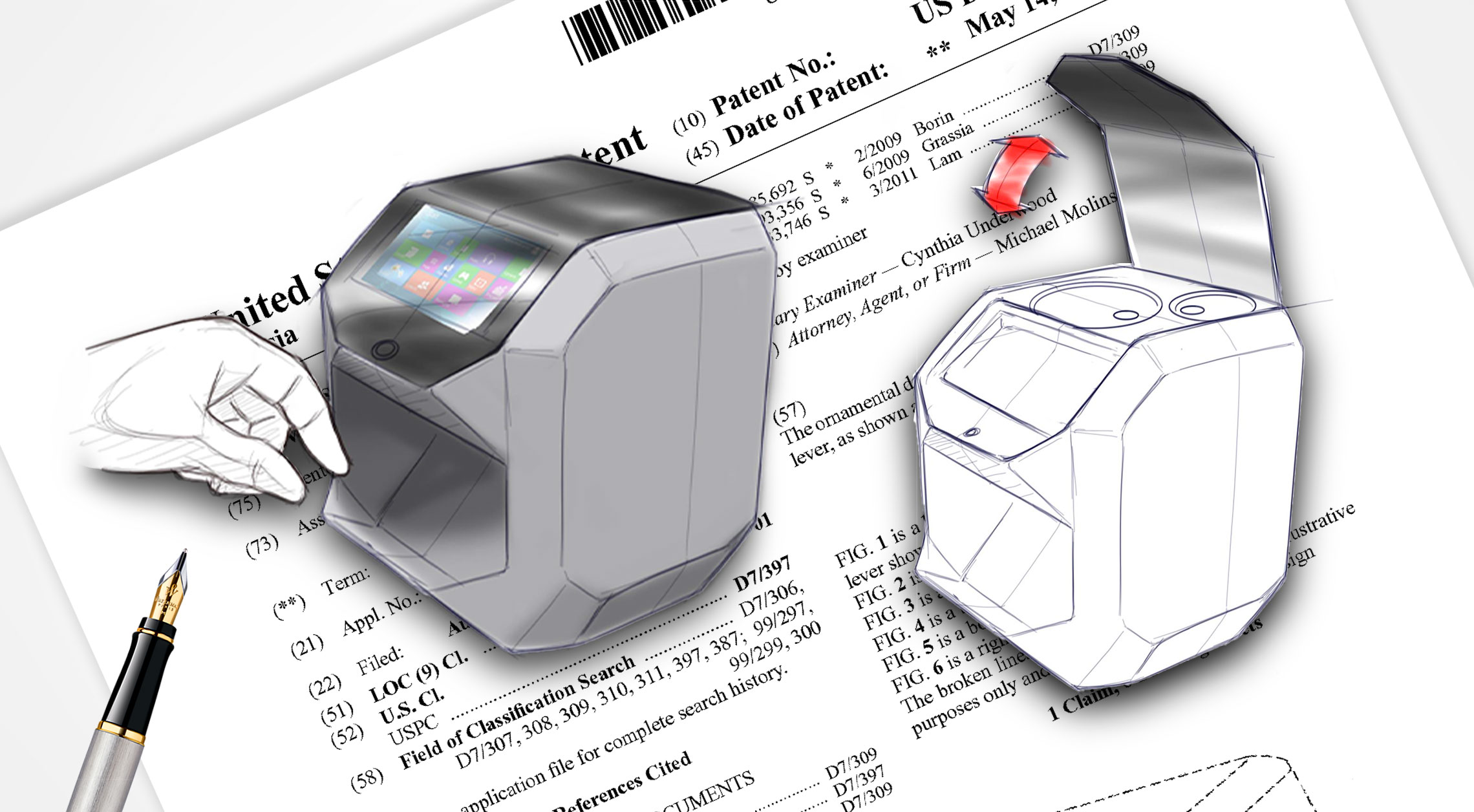
Lime Design has been bringing products to life for over 15 years. Along the way are continually perfecting our process. We find that working with patent attorneys early in the process allows the opportunity to create more patentable products. We use the sketches from the concept development stage to apply for a provisional patent application.
These images will be used so the lawyer can better describe the invention and its function and the applications it may be useful for.
Check out our preferred partner’s page (Here). Feel free to contact any of our preferred partners about beginning the patenting process. To educate our potential investors and business startups, we have created a podcast where we discuss the hard questions when it comes to patenting and trademarking a new product idea. Guests will be patent attorneys, manufacturing specialists, startups, inventors, marketing specialists, investors, and more. (Picture of partners page)

At Lime Design, we begin every client project with a collaborative meeting and brainstorming session with our talented design and engineering team. We typically do this meeting in-person or video conference. Our goal for this meeting is to talk about your idea and fully understand what it is you want to create. While we learn about your idea, we will provide research and recommendations based on our experience on optimal technologies and components to use for your product. This is also the perfect time to discuss product requirements, business objectives, timeline, budgetary constraints, monetization plans, and product aesthetics.

After our initial meeting together, our team begins researching and studying your competition. Our market analysis includes researching the indirect and direct marketing competitors so we can understand your competitive landscape. Having a strong understanding of your market landscape allows us to find opportunities for what is missing in the market so we can gain a competitive advantage so we can make sure your product stands out in the market. Additionally, we define your targeted retail price for your product. This allows us to better understand our manufacturing budget and design your product to that price point. By knowing setting a price, we can make better design decisions that will minimize the production cost and allow you to meet your price point.

In this stage, we will take what we learned from our research and create 2-3 digitally sketched concept renderings of your product idea. Our design team will take the next 2 weeks to begin conceptualizing possible designs and aesthetics for your product. Sketching out your idea is important in the concept development phase because this allows us to visualize how your product will look and function. Starting out with sketches allows us to freely design your product without the constraints of the software. We also ensure that our sketches are ready to be used by patent attorneys so you can begin protecting your idea as soon as possible.
Patenting is crucial in product development to protect intellectual property and safeguard innovations from unauthorized use or reproduction by competitors. By securing patents for novel ideas or inventions, companies can establish market exclusivity, enhance their competitive advantage, and generate revenue through licensing agreements or product sales. Additionally, patenting encourages investment in research and development by providing legal recognition and financial incentives for innovation, fostering a culture of creativity and advancement in the industry.
Every idea or invention is very different in regards to complexity, size, materials, and other variables. Contact us to set up a discovery call with our team of engineers and we will give you an accurate quote of what your project will cost to bring to life.
There are three main types of patents: utility patents, design patents, and provisional patents. Utility patents protect new and useful processes, machines, articles of manufacture, compositions of matter, or improvements thereof. Design patents, on the other hand, safeguard the ornamental design or appearance of a functional item. Provisional patents provide a temporary placeholder for an invention, allowing inventors to establish an early filing date while preparing to file for a non-provisional patent application.
Are you an inventor with a groundbreaking idea, but unsure of how to turn it into a reality? Look no further! Our product development firm specializes in partnering with inventors like you to bring innovative concepts to market.
Let us be your trusted partner in transforming your vision into a tangible product that revolutionizes the market. Contact us today to schedule a consultation and take the first step towards making your idea a success!
Thank you for showing interest in Lime Design, you can fill out the contact form below and tell us a little about your project and we will contact you to setup a discovery meeting to give you an accurate quote.
Upon completing this form you will be emailed an NDA (mutual non-disclosure agreement), please sign it as soon as you can.


English, Spanish, Portuguese
Copyright @ 2008-2023 | All Rights Reserved | Terms & Conditions

English, Spanish, Portuguese
Copyright @ 2008-2023 | All Rights Reserved | Terms & Conditions